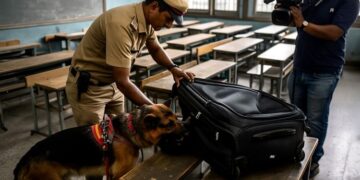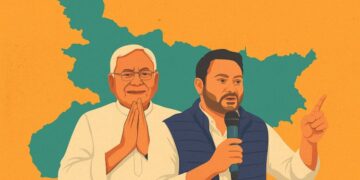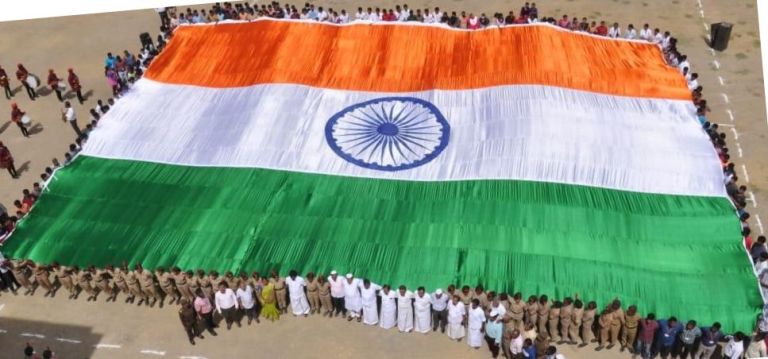Autar Nehru
‘Art of the possible’ idea of politics given by German statesman, Otto von Bismarck in a way holds true for the Indian state’s approach and treatment of school education. Nothing illustrates this better than the journey and status of the Right to Education. Instead of idealism, it has rather followed pragmatism and encouraged or even added to a diversity of models in contradiction of stated objective of creating an egalitarian society through equality and welfare.
Gopal Krishna Gokhale’s original Bill seeking to recognize the principle of free and compulsory education for every child though refused by the Government of the day, accomplished a few strides in that direction with the adaptation of the Resolution on Education Policy on February 21, 1913 that accepted the policy of removal of illiteracy. All that idealism contained in Gokhale’s Bill and the debate it generated, at the same time, however, remained in public discourse and till 1947 accompanied all those future panels and discussions that were taking place to charter and shape post independent India.
Subsequent efforts even after 52 years of independence, at the same time, proved short of convincing the law makers and inter alia fulfilling Gokhale’s dream for educating every child free of cost compulsorily until the Constitution 86th Amendment Act, 2002 enshrined the right to education as a fundamental right. And Even then (sarcastically), it took almost seven more years to actually get hold of legislation drafters to pilot a legislation after the amendment. In 2010, finally, the Right to Education (RTE), Act came into force, some 100 years after it was first championed.
According to Prof R Govinda, a former professor of Education at NUEPA and a member of the drafting committee of the RTE Act, now an emeritus professor at Delhi Council for Social Development (CDC), the Indian state has reluctantly embraced the law on free and compulsory primary education. “Kothari Commission and then the National Policy on Education, 1986, after Dr Sarvepalli Radhakrishnan’s recommendation in 1940s and Constitutional drafting committee discussions, were two occasions when the law could have been brought and celebrated, but it was only after the Supreme Court judgment in two cases—Unni Krishnan v. State of Andhra Pradesh; and Mohini Jain vs Karnataka—coupled with civil society movement and pressure of some academic papers that nudged the Government to move this amendment,” he said during a presentation on the reluctance of the state to accept RTE at an event organized by civil society network, RTE Forum on April 1, 2024.
Currently, many people may genuinely feel let down by the current BJP-led Government for not showing enthusiasm in the implementation of the RTE Act, but it wasn’t any better for those sitting on the opposite side of the fence, namely Congress and its allies. Ramamurti Committee appointed to review and recommend on the NPE, 1986 clearly mentioned in its report “Now, time has come to recognise ‘Right to Education’ as one of the fundamental rights of the Indian citizen for which necessary 120 amendments to the Constitution may have to be made and more importantly, conditions be created in society such that this right would become available for all children of India.” But the government of that time didn’t pay heed.
Politicians are never short of rhetoric, so what actually appealed to them was this rhetoric of ‘commitment.’ When they finally enacted it, a necessary provision of financial resources as a schedule that could have given it wings, was not included despite several experts knowing it would be just a paper tiger and a showpiece law for impressing people including international community. The same people put the country among the nations who ratified the UN Convention on the Rights of the Child (CRC), which has Right to Education integral to it. At face of hey never accepted this hypocrisy and an honest failure to build on it purposely.
As against a common and robust public-school system, the politicians fanned a hierarchal and diverse school system. When it was desirable to mainstream minority educational institutions to bring them under the ambit of the RTE Act for ensuring its success and to promote social harmony and integration, the politicians clearly preferred politics over a missed opportunity of cementing the fault lines perhaps permanently using the sacred school spaces.
Prof Govind feels the divide or the hierarchal nature of school system representing various vested and other interests is at the heart of problem. Despite a beautiful legislation, the reality is there are segregated ghettos of schools everywhere. The equitable school system is still a dream. He says unless the Government doesn’t give up its reluctance and accepts the spirit behind the law, this kind of debate will continue. “Recreating the school system is needed,” he adds.
Speaking at the same event, Colin Gonsalves Senior Advocate, Supreme Court, questioned the age bracket (6-14 years) as stipulated in the law when the juvenile law has recognized it at 18 and also Government spending on education. “When we are getting richer as a country, I wonder, why are we not able to raise the GDP spending on education from 3-4% to 6 or may be even 10%. What stops us?” he said taking a dig at the commitment of the Government on education.
Beyond this valid critique soaked in idealism and part of history, the pragmatic side of this analysis is that 15 years is still a short period to evaluate a legislation of this nature, let alone invite hopelessness. Over a period of time, the implementation of the law has thrown challenges, some very tough. Delhi’s AAP led government, which has successfully built transformation of government schools as a political plank, did actually support and implemented the scrapping of the ‘no detention clause’ in the RTE Act. It didn’t reduce hierarchy but actually added to diversity of schools. And, still it is seen as a champion of school education. Similarly, other states too have faced issues dealing with such a large number of schools and tried their own way of innovations. Like some wise people say laws are not static, but these also evolve, so there is a need to accept practical difficulties, bring these to public fora and find solutions. However, this argument at the same time doesn’t suffice the condition to overlook the elephant in the room.
The major problem actually lies in perception and narrative building. India has over 1.5 million schools, but the whole discourse both positive and negative is around the top 3000-4000 schools mostly affiliated to national and international boards. This miniscule minority of these schools controls the media space, the discussion space and through expert panels and committees, the government agencies itself. The government schools, which is still a majority, are left out of this race even if some of them have better achievements and practices. The discourse is such that government schools doing good work neither get good reviews nor have an inclination themselves to publicize their achievements and become role models for others.
As such government schools across the country have been labeled as schools of only the ‘poor.’ The first-generation learners and the poor parents, who have become its face both lacking agency to improve and develop these schools. The schools themselves don’t have a voice. It is not just the public discourse that is against these schools, but even the teacher community employed in them too have added to this scenario of showing them in poor light. According to Noor Mohammad, Rajasthan state convener of RTE Forum and founder of AMIED, Alwar, children in these schools are constantly humiliated, their dignity undermined and told you just can’t study. “Roz chot khatay hain yeh bachhe”, he says while referring to a system that feeds the higher ups with a gloomy scenario of nonseriousness towards education by these communities. “No wonder even if an inferior private school shows up in the neighborhood, these parents don’t take a minute to migrate to such schools even after knowing they have to pay a fees. The solution lies in strengthen government schools and increasing community participation in developing them,” he adds.
Noor Mohammad’s NGO acclaimed by even UNICEF has shown how this community engagement can work wonders and how School Management Committees can be empowered with little training and sensitization. States, which are the real agencies of actualizing right to education on ground have been wary because of the financial implications but these are also not lacking in innovating and trying out solutions in a race for smarting over the others. This is silver lining.
The election campaign is in full swing and after June 4, a new Government is going to be formed. Amendment to RTE Act must be a priority agenda as the challenges and opportunities that have come up in the last 15 years need to be addressed and availed. No jokes, some schools have more teachers than students, while others have no teachers but only students or a single teacher for a whole primary school. The distance norm can be tweaked by making a provision for transportation under the law as one kilometer or 3 kms isn’t practical in a large number of cases. Similarly, assistant teacher cadre and practitioner teachers need to be given legal status under the Act. These are just starters, the list could be long. Invite a feedback. Neoliberalism in school must be studied to see its impacts both good and bad, and may be that will lead to an informed debate and provide solutions.
So, who’s listening out there!











